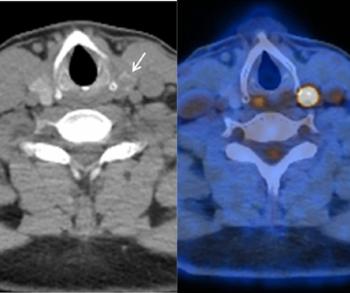
Agfa develops futuristic platform for scalable image management
Impax ES relies on integration as key to efficiencyAgfa offered its own version of the next generation of PACS during the RSNA meeting, unveiling a work-in-progress solution that company executives predict will take image
Impax ES relies on integration as key to efficiency
Agfa offered its own version of the next generation of PACS during the RSNA meeting, unveiling a work-in-progress solution that company executives predict will take image management to the next level. The Impax ES promises to eliminate workflow inefficiencies by integrating RIS, PACS, speech recognition, and work list applications. The technology is predicated on the notion that a unified client should be able to work on a single consistent application from anywhere.
Certain components, such as a multimodality display station, still require FDA clearance. But company executives believe the technology could be implemented across Agfa's line of products as early as 2004. Scalability is a key attribute, as Impax ES could be configured to function as either a stand-alone application to solve a discrete problem or as part of a complex integrated suite.
"Impax ES is the next phase within a continuum of Impax products linking the various elements of image management in radiology-RIS, PACS, and speech-while allowing departmental expansion into other departments, such as women's care, orthopedics, and cardiology," said Lenny J. Reznik, senior marketing manager of Agfa HealthCare Impax Solutions. "This will enable us to develop a truly integrated radiology IT solution, providing a single vendor solution for radiology image and information management."
Major goals, he said, are to achieve maximum productivity and optimize workflow. But there is another more subtle objective. Implementing Impax, as it is envisioned, promises to make radiology more relevant at the point of care.
Fully evolved, Impax ES would incorporate Voxar's flagship 3D package for reading multidetector exams. It would also feature PACS display wizards and hanging protocols intended to improve the way images are presented and manipulated. Single sign-on and context sharing with third-party products are other possibilities.
The company would not release sales projections for the first year once the Impax ES receives FDA clearance. Rather than identify a price range for the product, Reznik described it as scalable for imaging centers, community hospitals, teaching hospitals, and large multisite hospital enterprises.
To that end, the system will be marketed across the board. At one end of the spectrum, less complex solutions will be aimed at small facilities with relatively simple requirements. More complex configurations featuring CR, for example, and PACS with extended storage, will be configured for larger, more demanding institutions.
An enterprise-wide digital imaging system with integrated RIS and reporting capabilities built on the Impax ES platform will continue the company's tradition of providing an open, centrally managed architecture. Other components of the new platform include improved security, privacy, and auditing; tight integration with automatic image study updates, enabling enhanced communication with referring physicians; paperless workflow options; and an effective workflow solution for viewing large data set image studies.
Newsletter
Stay at the forefront of radiology with the Diagnostic Imaging newsletter, delivering the latest news, clinical insights, and imaging advancements for today’s radiologists.




























